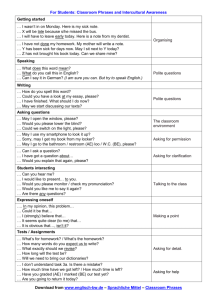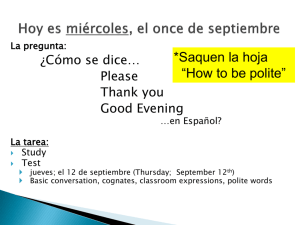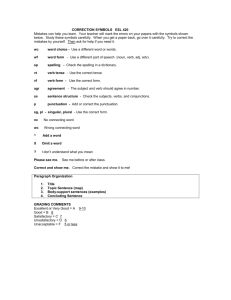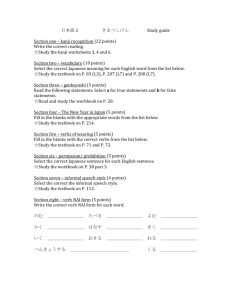check list
advertisement
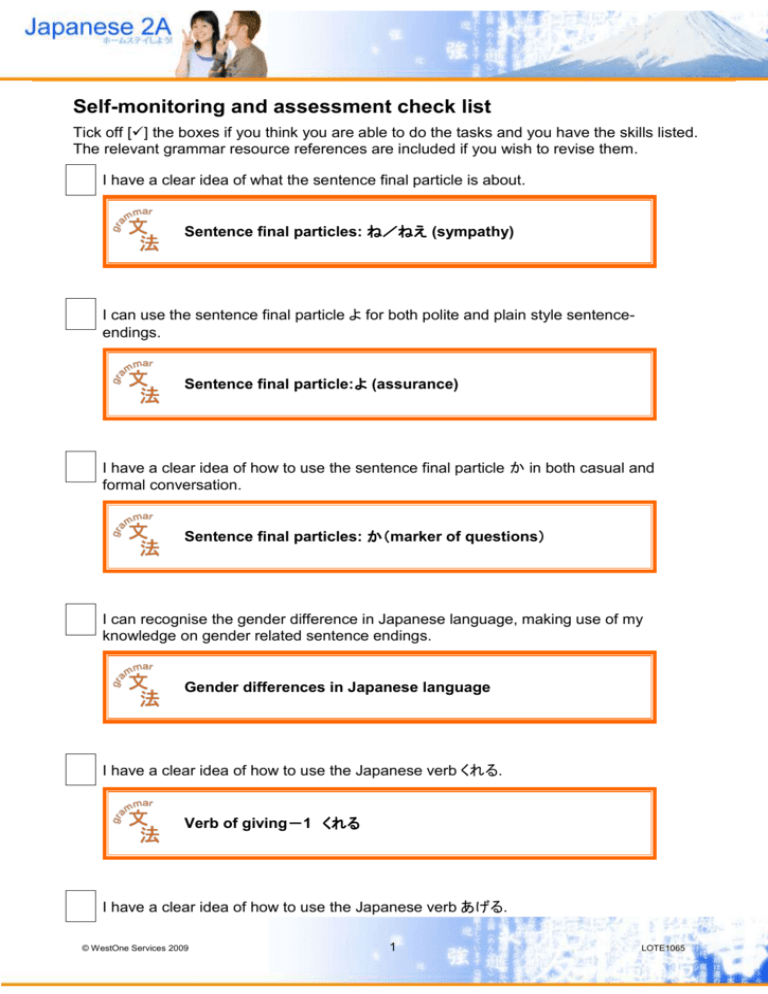
Self-monitoring and assessment check list Tick off [] the boxes if you think you are able to do the tasks and you have the skills listed. The relevant grammar resource references are included if you wish to revise them. I have a clear idea of what the sentence final particle is about. Sentence final particles: ね/ねえ (sympathy) I can use the sentence final particle よ for both polite and plain style sentenceendings. Sentence final particle:よ (assurance) I have a clear idea of how to use the sentence final particle か in both casual and formal conversation. Sentence final particles: か(marker of questions) I can recognise the gender difference in Japanese language, making use of my knowledge on gender related sentence endings. Gender differences in Japanese language I have a clear idea of how to use the Japanese verb くれる. Verb of giving-1 くれる I have a clear idea of how to use the Japanese verb あげる. © WestOne Services 2009 1 LOTE1065 Verb of giving-2 あげる I am aware of the common mistakes relating to あげる and くれる. Common mistakes related to あげる and くれる usage I can use the appropriate register in formal and informal communications. Basic rules for choosing the particular style in writing to someone When you need/intend to demonstrate respect to the readers, use polite forms at the end of sentences. If you do not need/intend to do so, you may use plain form. If you are writing about serious business, use polite form. If not, you may use plain form. It is also common to start the messages with formal greetings using polite form and shift the style from a polite one to a more casual one in the body of the message, and finish with formal endings. If you feel that your message is a significant part of your life, and you want to show the serious mood/atmosphere, use polite form even when writing to somebody close to you © WestOne Services 2009 2 LOTE1065



